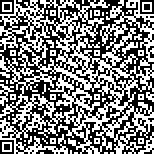| 摘要: |
| [摘要] 目的 探讨Graves病(简称GD)患者131I治愈前后尿微量蛋白变化的影响因素。方法 选择GD患者20例(GD组),根据131I治愈前后分成治疗前的GD组、治愈3个月R3M组、治愈12个月R12M组,并设正常对照组20例。采用全自动化学免疫发光法检测血清游离甲功3项[包括游离三碘甲状腺原氨酸(FT3)、游离甲状腺素(FT4)、促甲状腺素(TSH)]、促甲状腺受体抗体(TRAb)、尿微量白蛋白(Alb)、尿免疫球蛋白(IgG)、尿微球蛋白(β2-MG)含量。采用散射比浊法检测血清中超敏C反应蛋白(hs-CRP)。全自动血凝仪测定血清D-二聚体(D-D)。SPECT计算总肾小球滤过率(TRGFR)。结果 GD组游离甲功3项与各组比较差异有统计学意义(P<0.01)。GD组、R3M组的TRAb、Alb、IgG与其余组比较差异有统计学意义(P<0.01)。直线相关分析显示,FT3与Alb、IgG呈显著正相关(r分别为0.64、0.72,P均<0.01),TRAb与Alb、IgG呈显著正相关(r分别为0.66、0.56,P均<0.01)。结论 GD肾损害的部位在肾小球,与免疫紊乱关系密切;GD相关抗体的消失可作为判断GD肾损害的恢复及治疗效果的参考指标。 |
| 关键词: Graves病 肾脏 游离甲状腺激素 促甲状腺受体抗体 尿微量蛋白 131I治疗 |
| DOI:10.3969/j.issn.1674-3806.2014.05.14 |
| 分类号:R 581.1 |
| 基金项目: |
|
| Observation on the changes of urine microprotein in patients with Graves disease before and after cured with 131I |
|
LI Ni, LU Gui-nan, SUN Ze-yong, et al.
|
|
Department of Endocrinology,the People′s Hospital of Guangxi Zhuang Autonomous Region, Nanning 530021,China
|
| Abstract: |
| [Abstract] Objective To investigate the influence factors of the urine microprotein in the patients of Graves disease(GD) before and after cure with 131iodine(131I).Methods Twenty patients with GD were treated with 131I and 20 healthy person were used for normal control group(NG).The patients with GD were divided into GD group(before treatment with 131I), R3M group(3 months after of cure with 131I and R12M group(12 months after cure with 131I). The following biomakers were observeed in the above groups: 3 free thyroid functions[free three triiodothyronine(FT3), free thyroxine(FT4) and thyroid stimulating hormone(TSH)], thyrotropin receptor antibody(TRAb), urinary microalbumin(Alb), urine immunoglobulin(IgG) and urine β2-microglobulin(β2-MG) were measured by automatic chemical immune chemiluminescence. Serum high sensitivity C-reactive protein(hS-CRP) was detected by the scattering ratio.D-dimer was examined with Rate Nephelometry.And the total glomerular filtration rate(TRGFR) was calculated by SPECT.Results There was a significant difference in 3 free thyroid functions in GD group compared with those in R3M group, R12M group and in NG(P<0.01). A significant difference of TRAb, urine Alb and IgG was observed in the GD group and R3M compared with those in R12M and in NG(P<0.01). Linear correlation analysis showed that there was significant positive correlation between FT3 and Alb, IgG(r respectively were 0.64, 0.72, P all <0.01), TRAb was significantly positive correlated with Alb, IgG(r respectively were 0.66, 0.56, P all <0.01).Conclusion The kidney damage of GD occurs in the glomerulus and it is closely related to immune disorders. The disappearance of the hyperthyroidism-related antibodies can be used as the effect reference index in the assessment of recovery and treatment of GD renal damage. |
| Key words: Graves disease(GD) Kidney Free thyroid hormone Thyrotropin receptor antibody Urine microprotein 131Iodine treatment |

